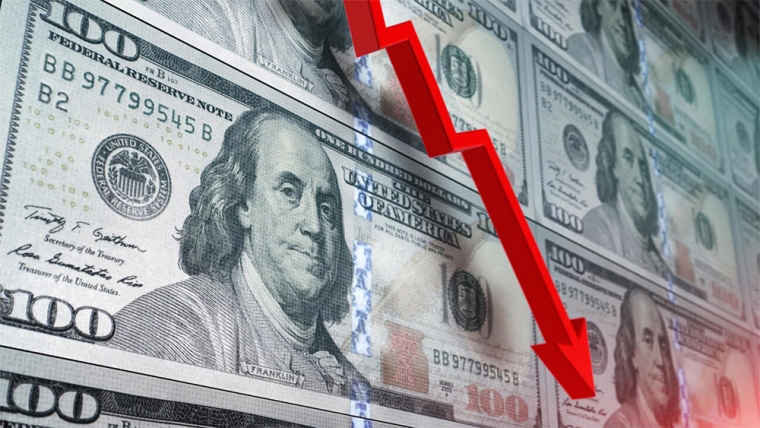
By Stuart Talman, XE currency strategist

News flow has been light to start the new week with US cash markets closed for the Martin Luther King Day holiday. Some US futures exchanges have traded abbreviated sessions.
Commencing the new week at 0.6375, the New Zealand dollar pushed higher throughout Monday’s local session climbing to its highest level in a month, marking highs a few pips shy of 0.6430.
The Kiwi was unable to maintain levels north of 64 US cents, reversing back to within a few pips of 0.6360 during European trade on no apparent drivers.
Risk assets have started the new year on a positive footing, extending the risk rally that commenced in mid-October, adopting the view that inflation has been tamed, enabling the Fed to slow the pace of rate hikes as the US central bank enters the final stages of its historically aggressive tightening cycle.
Having peaked near 115.00 in late September, the US Dollar index, aka DXY, (weighted measure of the dollar against a basket of six currencies) traded through 102.00 for the first time in over 6 months on Friday and now treads water above an important technical support level.
The DXY’s historical surge commenced in January 2021 below 90.00, adding close to 30% from its trough to the 28 September peak. The 50% Fibonacci retracement of this move is located at 101.9935.
Monday’s lows were marked below here, at 101.7730 before the DXY recovered back up through 102.00.
We’ll be monitoring 101.9935 through the week for tentative signs the DXY’s downside surge is losing momentum or, should price action extend lower, the broad based US dollar weakness narrative has further to run.
With a ~58% weighting in the DXY, the Euro has by far the greatest influence on DXY levels. The Japanese Yen the next largest weighting at almost 14%.

The euro has been one of the strongest performing currencies through late 2022 and into the new year, staging a significant rebound on improving energy fortunes, stronger macroeconomic data, the ECB’s hawkish December policy shift and the China re-opening story.
Whilst economic growth is still expected to slow such that the eurozone economy slips into a recession, this recession is now projected to be far less ugly relative to what was expected when natural gas prices where rocketing higher in late August.
Having peaked above 0.61 on 13 December, NZDEUR fell through 0.59 later in the month as ECB Chief Lagarde informed the market that the eurozone rates would be moving higher relative to current market expectations.
From late December, NZDEUR has range traded between 0.5870 and just of 0.6000.
Provided the energy crises does not flair up again and bond yields for the likes of Italy and Greece relative to German bond yields remain orderly as the ECB progresses its tightening cycle, the euro should continue to be one of the stronger performing G10 currencies through the fist half of 2023.
Expectations are for NZDEUR upside to continue to be capped below 0.6000 in the short to medium term.
This evening delivers the latest update for inflation out of Germany in addition to the ZEW Survey – a widely followed measure of institutional investor sentiment, aggregating the sentiments of approximately 350 economists and analysts on the economic future for Germany in the medium term.
Having fallen to near record lows of sentiment in September, the ZEW sentiment index has sharply rebounded in recent months.
The major economic releases for Tuesday are China’s trio of activity readings – GDP, retail sales and industrial production whilst the UK calendar delivers the December employment report.
Given the China data will be negatively impacted by Covid lockdowns the retrospective is now dated given the abrupt abandonment of covid-zero in December. The data will become more compelling over the next few months, providing insight into how quickly economic activity returns to pre-pandemic levels.
UK jobs numbers, like other developed nations, continue to defy central bank tightening. Later in the week, CPI for December is also released. Should wages and inflation print softer than expected, rates markets will continue to dial back BoE tightening expectations, a trend that has emerged following December’s divided vote which saw the UK central bank raise rates by 50bps to 3.50%.
Current market pricing calls for just shy of a further 100bps of tightening.
The Kiwi continues to range trade against the pound, NZDGBP price action largely contained between 0.5170 and 0.5270 since late November. A break above 0.5270 is required to shift to a more bullish near-term outlook for the pair.
Canadian CPI is the major data point for the North American session, core inflation expected to bounce back to 6.1% having fallen below 6% the previous two months. The current peak of this cycle was logged in June at 6.2%.
Expectations for the Kiwi through Tuesday’s sessions is to maintain consolidative price action within its prevailing 0.6320 to 0.6420 range. A range breakout may occur through Wednesday’s overnight session when US retail sales is released.
Daily exchange rates
Select chart tabs
Stuart Talman is Director of Sales at XE. You can contact him here.

We welcome your comments below. If you are not already registered, please register to comment.
Remember we welcome robust, respectful and insightful debate. We don't welcome abusive or defamatory comments and will de-register those repeatedly making such comments. Our current comment policy is here.